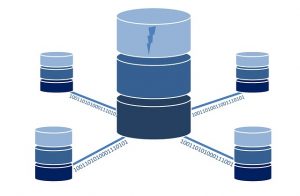“Use managed services.”
If there was one piece of advice I wish I could shout from the mountains to all cloud engineers, this would be it.
Operations, especially operations at scale, are a hard problem. Edge cases become commonplace. Failure is rampant. Automation and standardization are crucial. People with experience running software and hardware at this scale tend to be rare and expensive. The mistakes they’ve made and situations they’ve learned from aren’t easy to pick up.
When you use a managed service from one of the major cloud vendors, you’re getting access to all the wisdom of their teams and the power of their automation and systems, for the low price of their software.
A managed service is a service like AWS relational database service, Google Cloud SQL or Azure SQL Database. With all three of these services, you’re getting best of breed configuration and management for a relational database system. There’s configuration needed on your part, but hard or tedious tasks like setting up replication or backups can be done quickly and easily (take this from someone who fed and cared for a mysql replication system for years). Depending on your cloud vendor and needs, you can get managed services for key components of modern software systems like:
- File storage
- Object caches
- Message queues
- Stream processing software
- ETL tools
- And more
(Note that these are all components of your application, and will still require developer time to thread together.)
You should use managed services for three reasons.
- It’s going to be operated well. The expertise that the cloud providers can provide and the automation they can afford to implement will likely surpass what you can do, especially across multiple services.
- It’s going to be cheaper. Especially when you consider employee costs. The most expensive AWS RDS instance is approximately $100k/year (full price). It’s not an apples to apples comparison, but in many countries you can’t get a database architect for that salary.
- It’s going to be faster for development. Developers can focus on connecting these pieces of infrastructure rather than learning how to set them up and run them.
A managed service doesn’t work for everyone. If you need to be able to tweak every setting, a managed service won’t let you. You may have stringent performance or security requirements that a managed service can’t meet. You may also start out with a managed service and grow out of it. (Congrats!)
Another important consideration is lock-in. Some managed services are compatible with alternatives (kubernetes services are a good example). If that is the case, you can move clouds. Others are proprietary and will require substantial reworking of your application if you need to migrate.
If you are working in the cloud and you need a building block for your application like a relational database or a message queue, start with a managed service (and self host if it doesn’t meet your needs). Leverage the operational excellence of the cloud vendors, and you’ll be able to build more, faster.
 So I was doing a load test and saw behavior that reminded me that sometimes you just need to test.
So I was doing a load test and saw behavior that reminded me that sometimes you just need to test. RDS
RDS